Watches & Pencils #24 – Lifesavers and Killers: Pulsometer and Telemeter
Introduction
As many of us, I follow a lot of watch loving people on Instagram. While scrolling through my Instagram timeline I often encounter comments like ‘What a stunner’ or ‘What a killer’. Not really related to the real purpose of the watch…

While this kind of comments perfectly make sense on those passingly IG accounts I suddenly discovered that this is true in some cases. Although not much in present time, watches have been killers or lifesavers in the past.
Functionality to Design Statements
Nowadays most of us buy a watch pure by its aesthetics. Ok, sometimes things like a chronograph come in handy when you want to boil your eggs. But besides this that will be about it. So much has changed since the early days of wrist watches. Many elementary parts were build on needs from a practical point of view. As we all know, later on they morphed into design statements or elements which raise the collectibility grade. In this episode I would like to showcase a few watches which truly could have saved or killed lives.
The Lifesavers
If we talk about lifesavers you could say that there are two groups. Watches which came with lifesaver functions as an option/variant and dedicated ‘doctor’ watches. To compare two watches:
- Omega Speedmaster with pulsations scale
- Angelus Doctors chronograph
Omega released Speedmasters with many different bezels. One of them was a bezel to measure the heart frequency (beats per minute) via the pulsations scale on the bezel. The principle is very simple. Short explanation: let the chrono hand run for 15 or 30 heartbeats and read the heart frequency via the pulsations bezel. The benefit of this principle is that you don’t have to do any mental math.
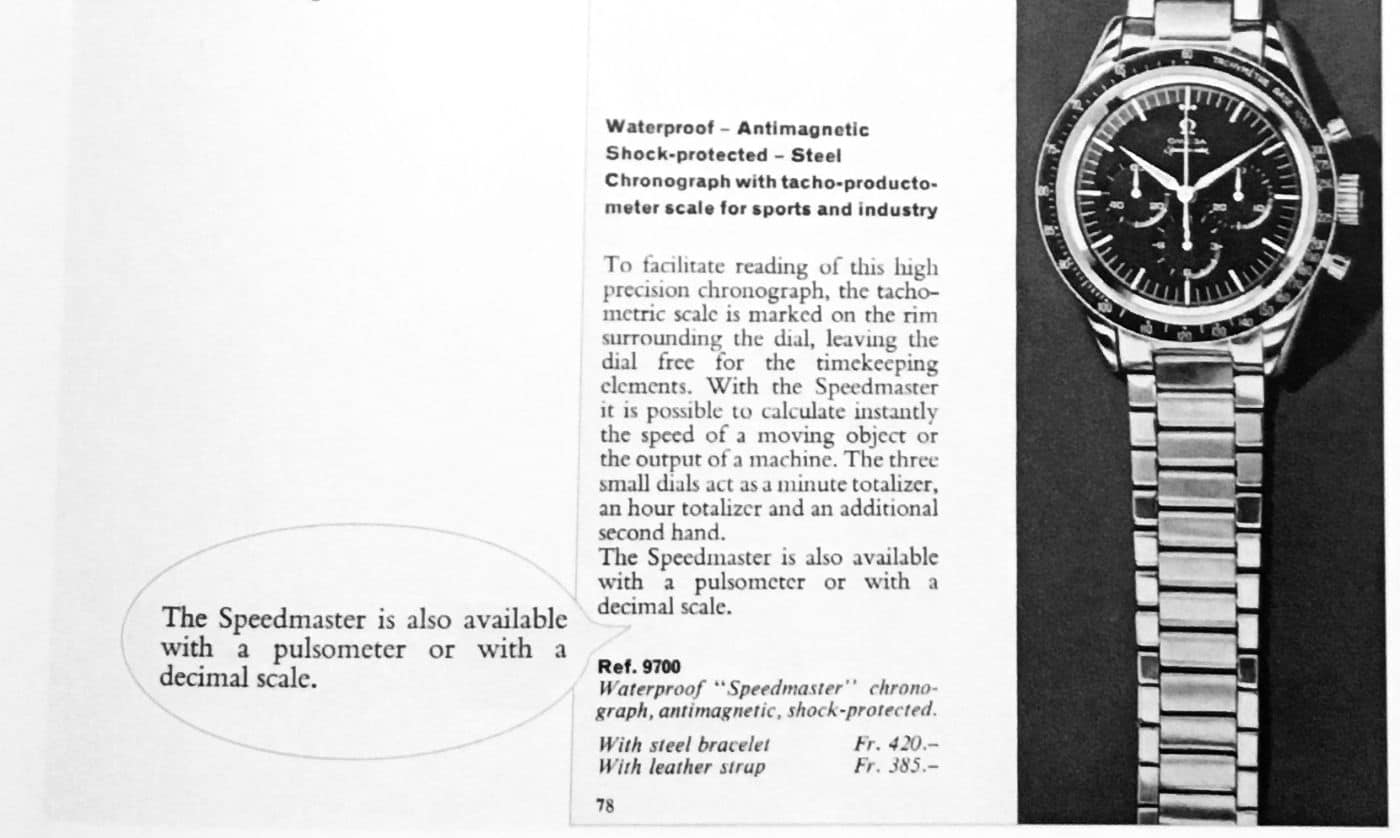
Old ad by Omega which proves that the pulsometer was an option (source: Moonwatch Only book)
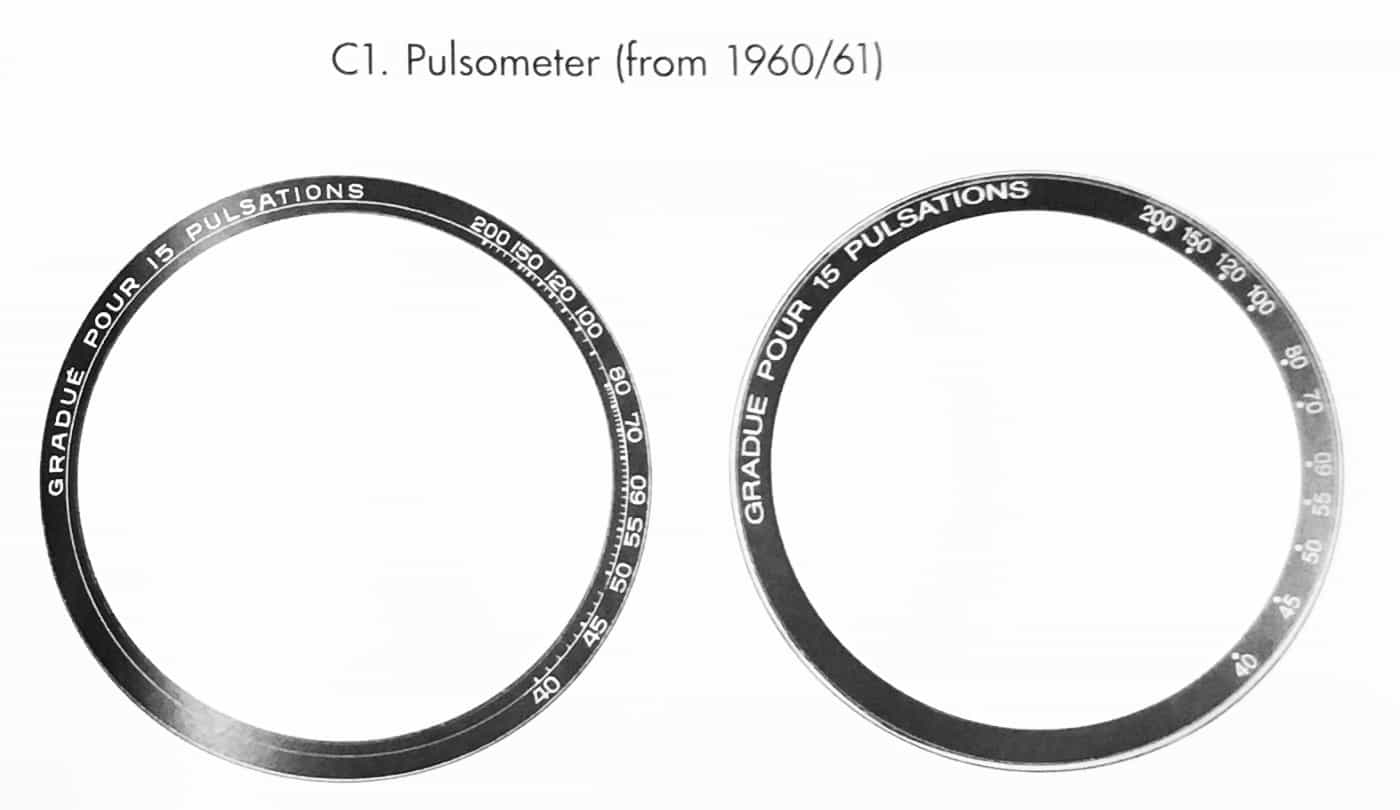
Examples of Omega Speedmaster pulsometer bezels (source: Moonwatch Only book)
While the Speedmaster is ‘usable’ for measuring the heart frequency, it was initially never designed for this task and pretty basic in terms of indication and measurement helpers. To compare it with a watch which was designed for doctors:
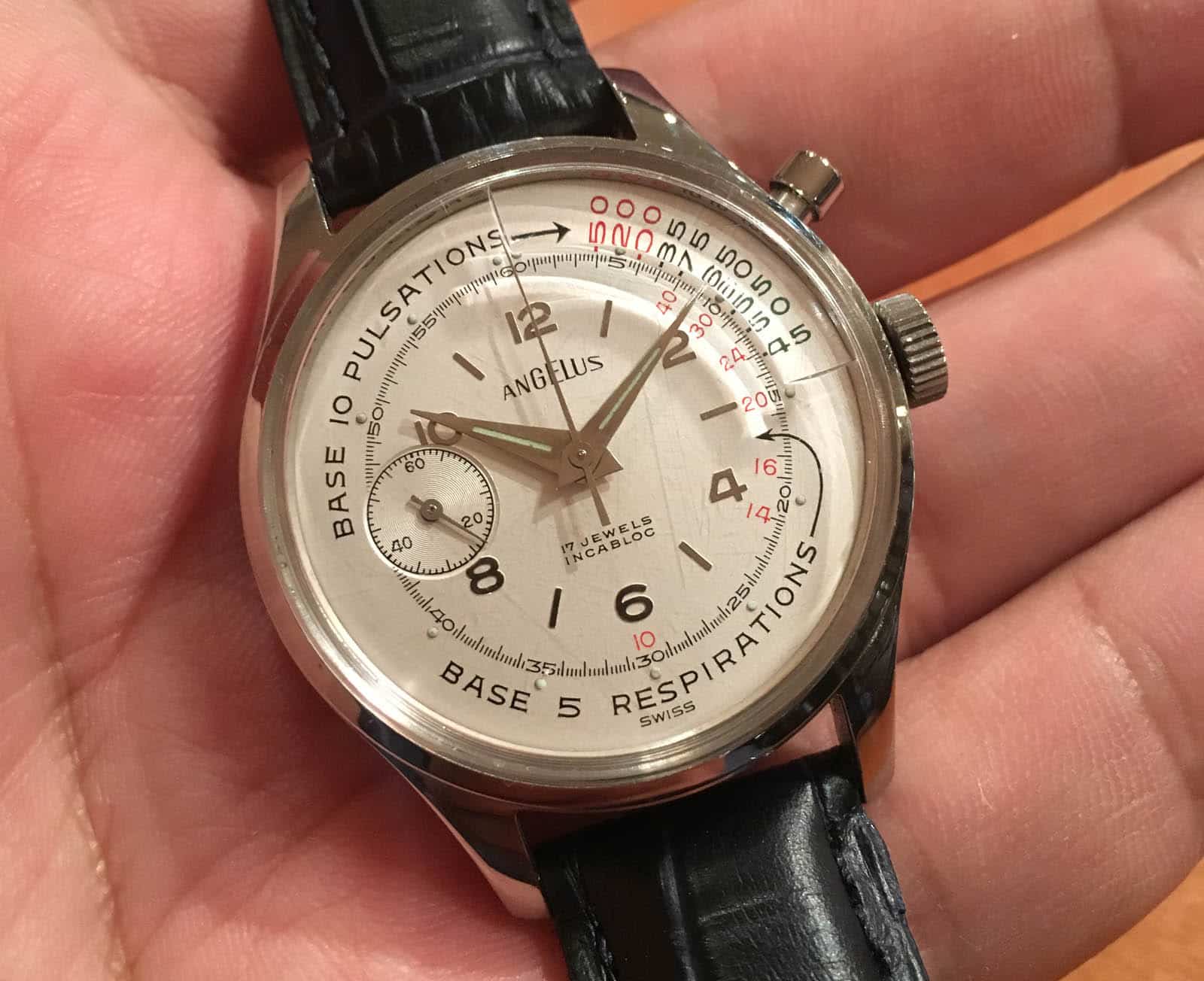
Antiquorum Geneva Auctions
As you can see this Angelus mono-pusher, alias ‘doctor’s chronograph’, has a prominent pulsometer area and one pusher dedicated to measure the heart frequency. Also, the chrono hand swipes directly over the numbers which are magnified by the loupe area on the crystal. This makes it a bit more accurate and better to read compared to the Speedmaster. The scale is based on 10 pulsations. Besides this you can also measure the respiratory rate on this watch. This stands for number of breaths per minute. To measure it you need to look at where the big black arrow points you to: the inner ring with red numbers. It is based on 5 chest rises and then the watch will do the math for you.
There are many examples of watches with a pulsometer which could have saved lives. But again, nowadays it is more a reminder of history than a tool which is used frequently to do thoroughly diagnoses.
The Killers
When we think about killers we almost immediately think of war and there related watches. Before I mention some killers it is good to know that most of those watches have a paradox. For example, a military watch is often equipped with scales. Scales to calculate distance. Shooting distance for example (more on that later on). But it could also be used to save a life. For example, it can display the time that you have to save someone’s life. Or, on the famous Breitling Navitimer, to measure fuel consumption to check if you have enough in the tank to reach safe zones.
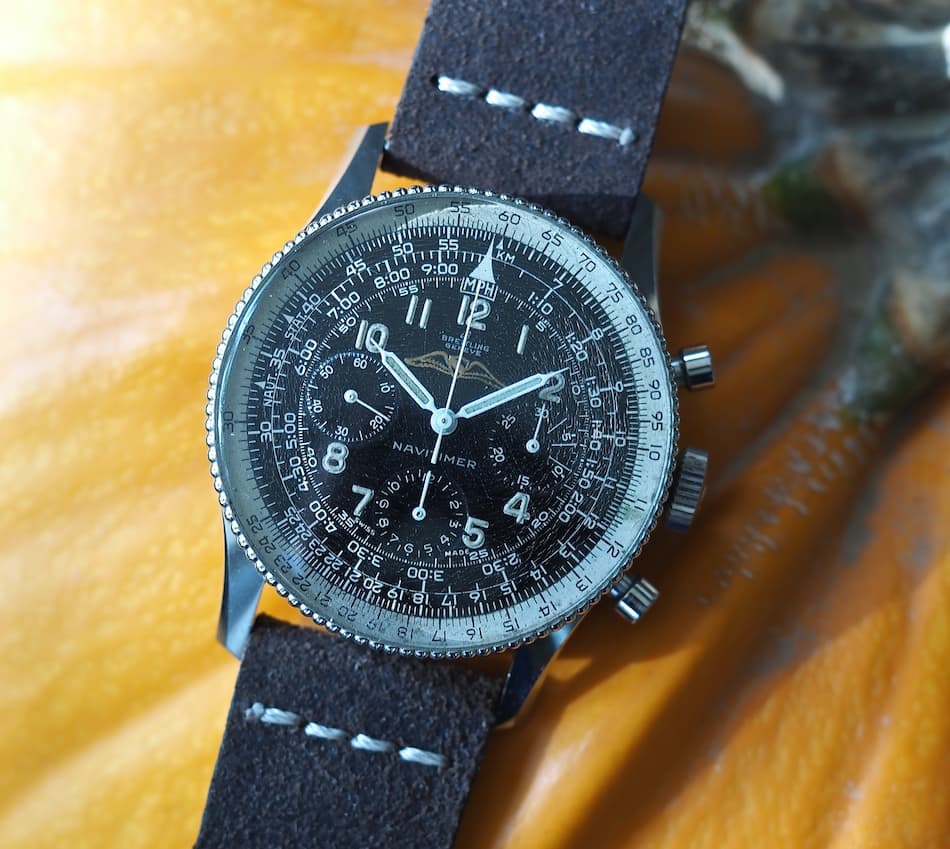
Navitimers come with a comprehensive booklet to measure all kind of things. For example, fuel consumption
Telemeter Scales
Let’s look at the so called telemeter bezel. See a recent example below. The telemeter is very easy to use. When a visual element at a certain distance is observed, the timer is started. A bit later, the timer is stopped when the sound that corresponds to the observation is heard. The approximate distance is read off the scale. For example, you could measure the distance of lightning with this principle. First you see the lightning and later on you will hear the clap.
In a military setting the Telemeter scale was used as an artillery range finder. The principle: you can see the flash of the enemy, time the event until you hear the sound, and be able to know the approximate distance away the artillery is placed. After this you could strike back with more “killing” precision.
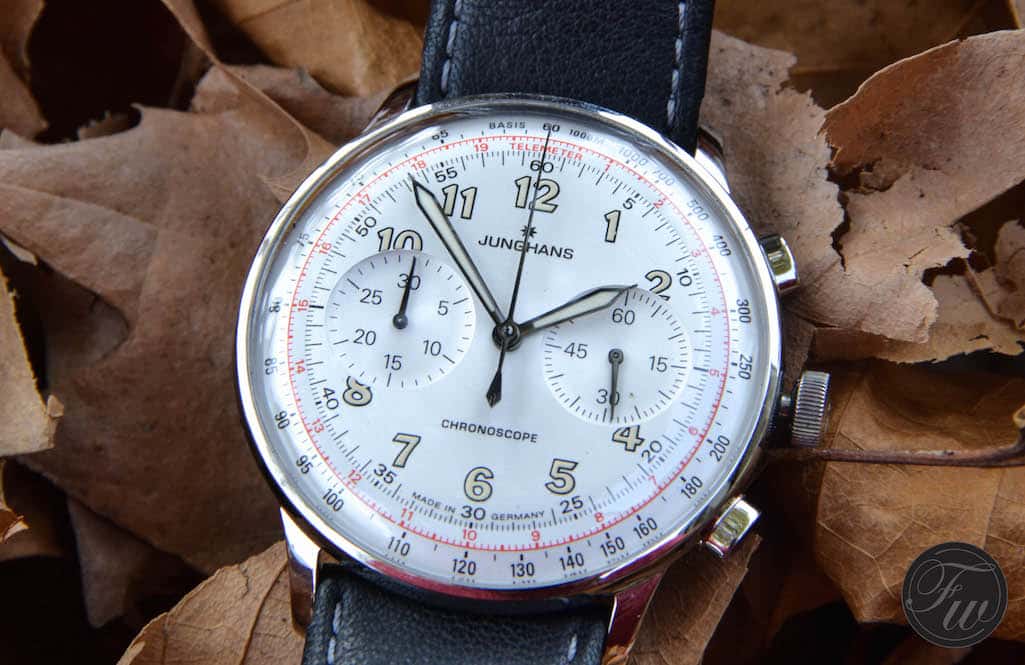
A telemeter example: Junghans Meister Telemeter (ref. 027/3380.00)
Conclusion
Those practical scales really influenced the way watches look nowadays. You can’t really give a uniform answer about most watches and their purpose. They could even live a double life, except for obvious examples like the doctors chronograph or military watches with engravings/military markings. Can you name other examples of killers or lifesavers? I would like to hear from you and see you in the next episode!

Examples of vintage military watches.
